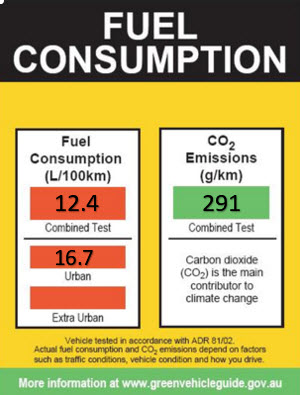Forum Replies Created
-
AuthorPosts
-
All the hearts and black aces are removed from a standard pack of cards. If a card is drawn at random from the remaining cards, find the probability of drawing:
a. A red card.b. An ace.
if all the hearts are removed – that leaves 39 cards and then remove two black aces, that leaves 37 cards 13 red cards left, and only one red ace
a. P(red) = $$\frac{13}{37}$$
b. P(Ace) = $$\frac{1}{37}$$
in reply to: Probability #18902There is a 9 in 10 chance of a bird hatching and surviving in the Nullarbor Plain. From a nest of 3 chicks, find the probability that:
a. All 3 chicks survive.
b. No chicks survive.
c. Exactly 2 chicks will survive.
a. P(SSS) = 9/10 × 9/10 × 9/10
= 729/1000
P(Survive) = 9/10 P(Dead) = 1/10
for them all to survive, there is only one way this can happen SSSb. P(DDD) = 1/10 × 1/10 × 1/10
= 1/1000
for none to survive they all must be dead: DDD c. P(2S, 1D) = P(SSD) + P(SDS) + P(DSS)
= 9/10 × 9/10 × 1/10 + 9/10 × 1/10 × 9/10 + 1/10 × 9/10 × 9/10
= 243/1000
for 2 to survive, must consider all the ways this can happen
SSD where the first 2 survive and the last one dies
SDS where the middle one dies
DSS where the first one diesin reply to: Probability #18900Five cards are numbered 1, 2, 3, 4 and 5. Two cards are selected and placed together to form a 2-digit number.
a. What is the probability of forming the number 43?
b. What is the probability of an even number occurring?
12, 13, 14, 15
21, 23, 24, 25
31, 32, 34, 35
41, 42, 43, 45
51, 52, 53, 54work out all of the possible digits
doing this in an organised table is the most efficient and easy waya. P(43) = 1/20 there are 20 numbers altogether and only one that forms 43 a. P(even) = 8/20
= 2/5
counting the even numbers, there are 8 of them in reply to: Probability #18899At a tropical holiday resort, the probability of rain on any day is 0.8. What is the probability that it will rain on a particular weekend? P(rain on the weekend) = P(RR) + P(R-) + P(-R)
= (0.8 × 0.8) + (0.8 × 0.2) + (0.2 × 0.8)
= 0.96
we must consider all of the possibilities
Rain on both Sat and Sun: R R
Rain on Sat but not Sun: R –
Rain on Sun but not Sat: – Rin reply to: Financial Expectation #18898John plays a game in which he has a 20% chance of winning $50, a 50% chance of winning $10 and a 30% chance of losing $5. What is John’s financial expectation when playing this game? P($50) = 0.2
P($10) = 0.5
P(-$5) = 0.3each probability must be multiplied by the outcome, and the loss will be a negative outcome E = 0.2 × 50 + 0.5 × 10 + 0.3 × -5
E = $13.50calculate the expectation, which in this case is winning $13.50 in reply to: Financial Expectation #18895A coin is biased to that there is a 60% chance it will be heads when it is tossed. If the coin is tossed and the result is “a head” you win $12 if the result is “a tail” you lose $15. Calculate the expected financial return.
P(H) = 0.6 win $12
P(T) = 0.4 lose $15To obtain the Expectation (E) you must multiply the probability of the outcome by the financial return, remembering if it is a loss, then the number is negative E = 0.6 × 12 + 0.4 × -15
= $1.20so the expectation of the game is positive, which is a win, of $1.20 in reply to: Financial Expectation #18893There is a game where there is a 20% chance of winning $50, 50% chance of winning $5 or losing $5 if no prize is won. What is the financial expectation of this game?
P(lose) = 0.3
E = 0.20 × $50 + 0.50 × $5 + 0.30 × -$5
= $11
in reply to: Two Way Table #18887Test Results Accurate Not Accurate Total With Disease 130 70 200 Without Disease 250 50 300 Total 380 120 500 130 = Accurate positive: The number of people who were accurately told they do have the disease. ie, told they have it and do have it
70 = False negative: The number of people who were falsely told they do not have the disease. ie, told they do not have it and do have it
200 = The total number of people with the disease250 = Accurate negative: The number of people who were accurately told that they do not have the disease. ie, told they do no have it and do not have it
50 = False positive: The number of people who were falsely told they have the disease. ie, told they have it and do not have it
300 = The total number of people without the disease380 = Total number of accurate results
120 = Total number of false/inaccurate results
500 = Total numberHere is another table, set up slightly differently.
Test Results Test Positive Test Negative Total With Disease 130 70 200 Without Disease 250 50 300 Total 380 120 500 130 = Positive result + disease. So this would be an accurate positive. ie, told they have it and do have it
70 = Negative + disease. So this would be a false negative. ie, told they do not have it and do have it
200 = The total number of people with the disease250 = Positive + no disease. So this would be a false positive. ie, told they have it and do not have it
50 = Negative + no disease. So this would be an accurate negative. ie, told they do no have it and do not have it
300 = The total number of people without the disease380 = Total number of positive results
120 = Total number of negative resultsin reply to: Two Way Table #18886A new test has been developed for determining whether or not people are carriers of the Gaussian virus. A two way table was used to record the results.
Test ResultsPositiveNegativeTotalCarrier
Not Carrier
7414169688
112Total 90110a. How many people were tested?
b. A person selected from the group is not a carrier of the virus. What is the probability that the test results would show this?
c. For how many of the people tested were their test results accurate?
a. total = 88 + 112
= 200b. there are 112 people that are not carriers, out of those 96 have a negative result – ie showing they are not a carrier
P = $$\frac{96}{112}$$= $$\frac67$$
c. an accurate result would mean:
carrier receiving a positive result = 74
non carrier receiving a negative result = 96
accurate = 74 + 96
= 170in reply to: Heart Rate #18883What is the MHR for a 20 year old? MHR = 220 – 20 Use formula MHR = 220 – age in years = 200 bpm answer in units bpm (beats per minute) in reply to: Fuel Consumption #18877 The fuel consumption for John’s car is 16.7 L/100km for Urban conditions. The combined fuel consumption is 12.4 L/100km.
The fuel consumption for John’s car is 16.7 L/100km for Urban conditions. The combined fuel consumption is 12.4 L/100km.
a. The fuel consumption for the Combined Test is the average of the Urban and Extra Urban (Freeway) rates.
What is Extra Urban Fuel Consumption Rate?b. John travels to work 520km each month in Urban Conditions. How many litres of fuel per month does John use travelling to work?
c. John travels to work for 11 months per year. How many kilograms of CO2 emissions would John’s car make?
a. $$12.4=\frac{16.7+x}{2}$$ to find average add Urban (16.7) to Extra Urban (x) and divide by 2 24.8 = 16.7 + x multiply both sides by 2 x = 8.1 subtract 16.7 from both sides 8.1 L/100km b. 520 ÷ 100 = 5.2 driving in Urban conditions uses 16.7 L/100km. Find how many lots of 100km in 520 km by dividing 5.2 × 16.7 = 86.84 L this means that John used 5.2 lots of 16.7 L, so to find his fuel used multiply 86.84 L per month c. 520 × 11 = 5720 km if John does per month, multiply by 11 to find fuel for the 11 months he travels to work 5720 × 291
= 1 664 520 grams
the CO2 os 291 g per km, since he did 5720 km, multiply 1 664 520 ÷ 1000
= 1644.52
convert to kg by dividing by 1000 1644.52 kg in reply to: Fuel Consumption #18876A car uses 7.28 litres of petrol per 100 km. If you were to go on a 315 km trip, how many litres of petrol would the car use? 315 ÷ 100 = 3.15 find out how many lots of 100km are in 315km by dividing this means we would need to buy 3.15 lots of 7.28 litres 3.15 × 7.28L = 22.932 L to find the number of litres multiply 3.15 by 7.28 in reply to: Fuel Consumption #18875A motorist started a trip with a full tank of petrol and after travelling 540km refilled the tank. Given that the refilling took $45 worth of petrol at 70.9 cents per litre. Calculate:
a. the number of litres of petrol used on the trip.
b. the consumption rate per hundred kilometres.
a. 70.9 ÷ 100 = $0.709 Step 1: Change the cents to dollars 45 ÷ 0.709 = 63.5 L Step 2: Find out how many litres by dividing $45 by the cost per litre b. 540 ÷ 100 = 5.4 Step 1: Since we are interested in how many litres per 100km, we need to find out how many lots of 100 are in 540 km 63.5 ÷ 5.4 = 11.76 Step 2: To find out how many litres per 100km, we need to divide the number of litres by the number of 100 km’s ∴ 11.76 L/100km 2.5 g of medicine is used to make a 300 mL solution. What is the concentration of this medicine in mg/mL? 2.5 × 1000 = 2500 mg this means for every 3oo mL of solution, we need 2.5 g of medicine.
first we need to change the g to mg by multiplying 2.5 by 1000
2500 ÷ 300 = 8.333.. we need to find out how much per 1 mL, so we need to divide by 3oo 8.3 mg/mL A patient is prescribed 600mg of a painkiller. Calculate how much must be given if the medication is available in the concentrations:
a. 20 mg in 5 ml
b. 75 mg in 5 mla. 600 ÷ 20 = 30 this means for every 20 mg, we need 5 ml of painkiller, so we find out how many lots of 2omg are in 600 mg 8 × 5 ml
= 40 mlwe need 8 lots of 20 mg, which means we need 8 lots of 5 ml -
AuthorPosts



